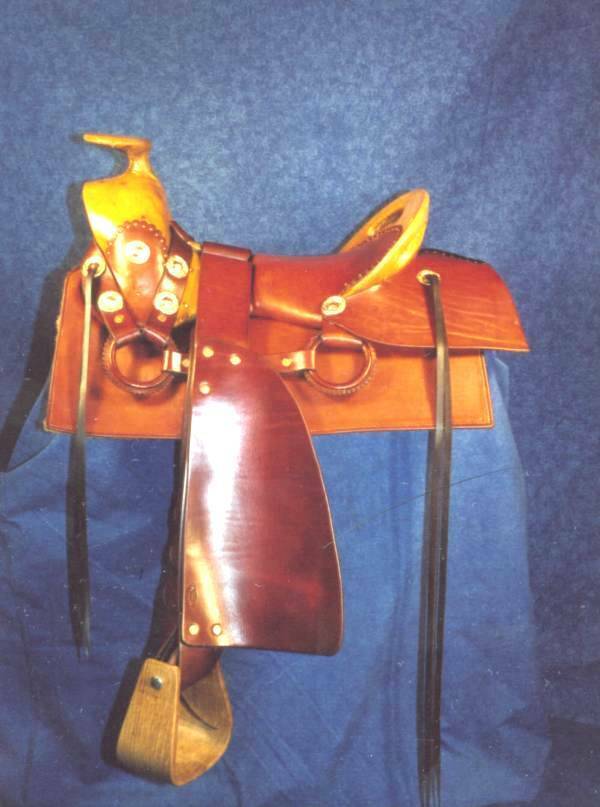-40%
1860-65 REPRODUCTION SADDLE BY SHERER CUSTOM SADDLES, INC.
$ 2164.79
- Description
- Size Guide
Description
1860-65 REPRODUCTION SADDLETREE: PONY EXPRESS WITH HAND HOLES, SEMI-QUARTER HORSE
ARIZONA
BARS
SEAT: 15 1/2"
SWELL: 8"
CANTLE: SHOVEL, HEIGHT 4", WIDTH 13", DISH 3/4"
HORN: DUCK BILL, FLAT TOP, HEIGHT 3", CAP 4"
GULLET: HEIGHT 8", WIDTH 6 1/4"
COVER: BULL
SADDLE STYLE: PLAIN, 1860-65 STYLE
SEAT: ALL-LEATHER GROUND SEAT, HALF SEAT, FLAT, SCALLOPED WITH
BRASS NAILS IN CANTLE DISH
CANTLE: PLAIN RAWHIDE
RIGGING: FULL DOUBLE, TWO PIECE SPANISH, LEATHER COVERED RINGS,
STIRRUPS: 3" BARE OAK DOG HOUSE
STIRRUP LEATHERS: 3" FULL LENGTH INSIDE, LACED
FENDERS: MILITARY
LATIGOS: 1 1/2"
SKIRTS:
SMALL SQUARE
SEAT JOCKEY: NONE
FRONT JOCKEY: SCALLOPED WITH BRASS NAILS
HORN: PLAIN RAWHIDE
MISC.: 3/8" STRINGS, FOURTEEN HAND ENGRAVED AND RAISED BRASS
CONCHOS: 4 SLOT BRASS
CONCHOS
ON FRONT AND REAR STRINGS,
8 CONCHOS ON FRONT RIG, 2 ON FRONT JOCKEYS, 2 ON SEAT AT CANTLE (
CONCHOS
BY R. L. SHERER)
CINCHAS: 3B15NP BLACK ON TAN 30"
FINISH: NATURAL OIL
1860-65 REPRODUCTION SADDLE
From Pro Rodeo Hall of Fame Exhibition
Saddles of this period are a mix of different styles derived from earlier Hope, Morgan, Mexican and military saddles.
Regional influences of
Texas
and
California
also came into play as early saddlemakers experimented and developed the western stock saddle.
The saddle before you is built on a Pony Express tree and it has a half seat without seat jockeys.
The Spanish rigging, wide stirrup leathers and fancy brass conchos are derived from Mexican saddles.
The fenders are a military style.
The extended rear housing kept blankets or clothing tied behind the cantle off of the horse's back.
All of the saddle parts are small because cattle and their hides were small in this period.
The use of small parts conserved material that might have been shipped to the saddlemaker overland by wagon.
Compare the style of this saddle to the earlier 1830 Fur Trapper\Mountain Man saddle then compare it to the later 1880-85 Gallup No. 50 saddle.
Compare all three to contemporary saddles in the exhibition.
As cattle were bred larger, they yielded larger hides which allowed the saddlemakers to build saddles with attached seat jockeys, larger skirts and larger fenders.










